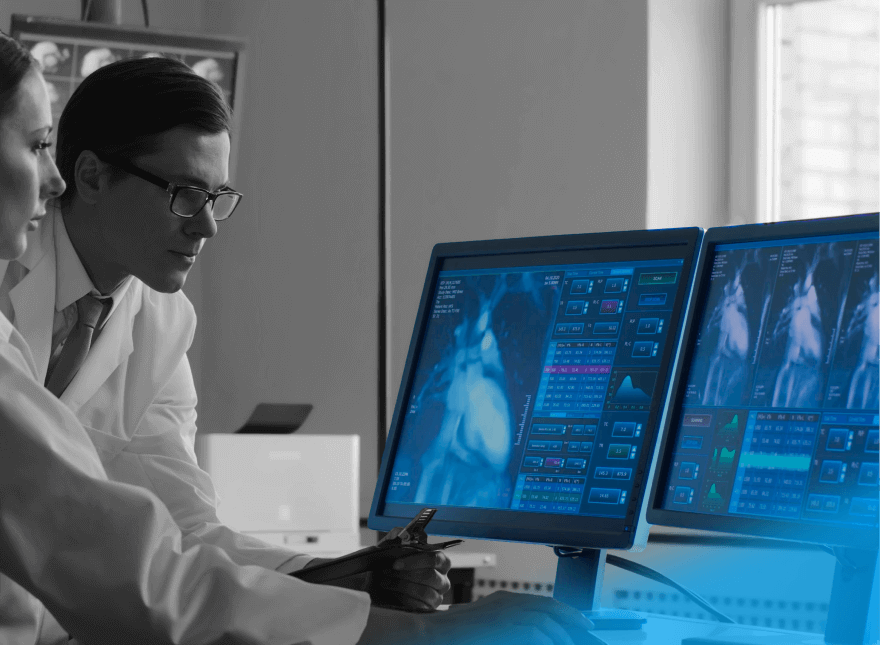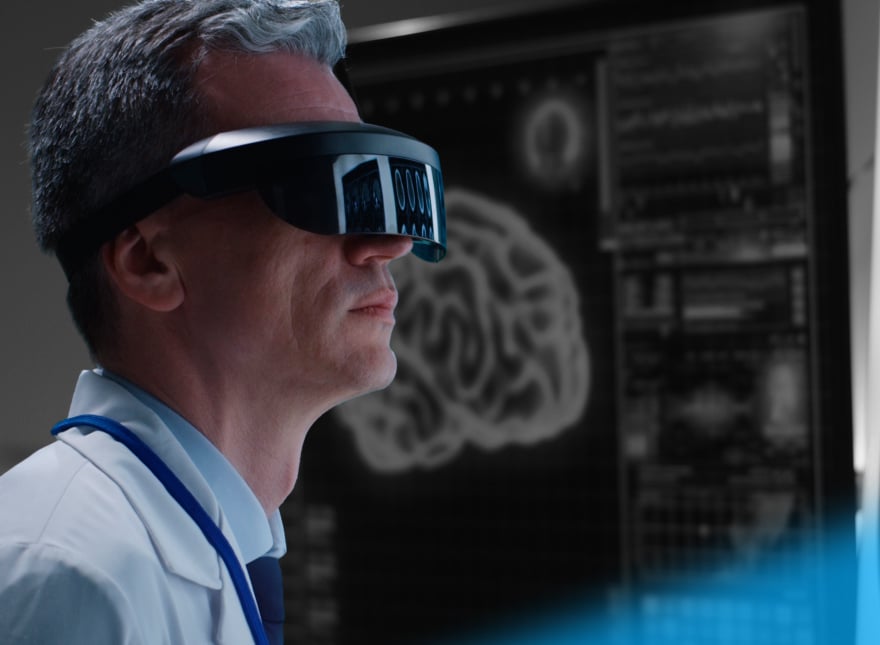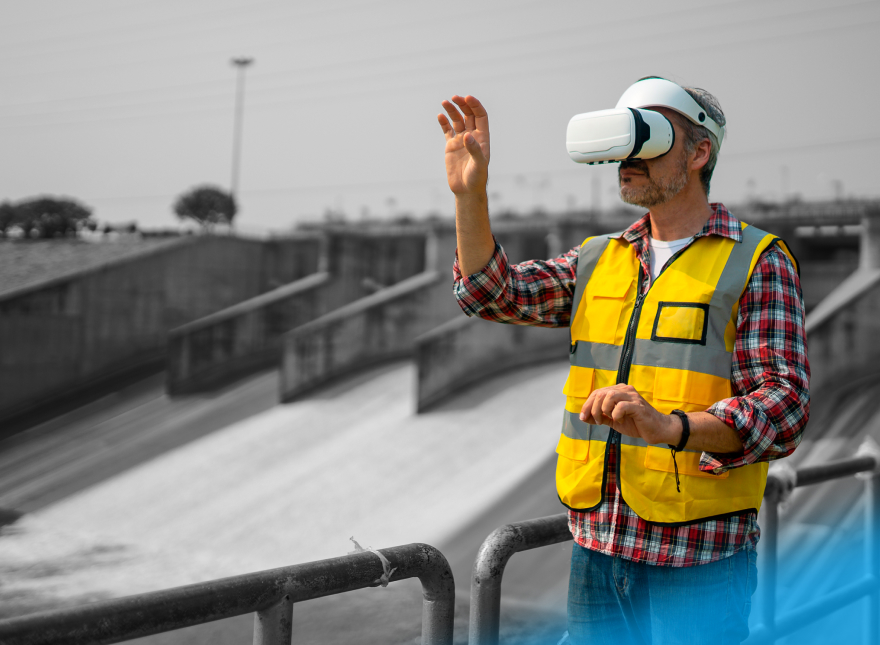Industry 4.0: New Business Opportunities for Manufacturing Companies

Industry 4.0 has become a buzzword. Everyone eagerly imagines how their companies might prosper using new technologies and data. But not everyone dares to take the associated risks: modernization requires investments, and the payback period may take years.
At the same time, data-driven manufacturing opens up new business models and profit opportunities. In this article, we’ll show three scenarios on how manufacturers can monetize data, discover new revenue sources through data-driven services, and reduce investment risks.
Table of Contents
Industry 4.0 Explained
Industry 4.0 simply means the fourth industrial revolution, another huge step in industrial development. Remember how it was?
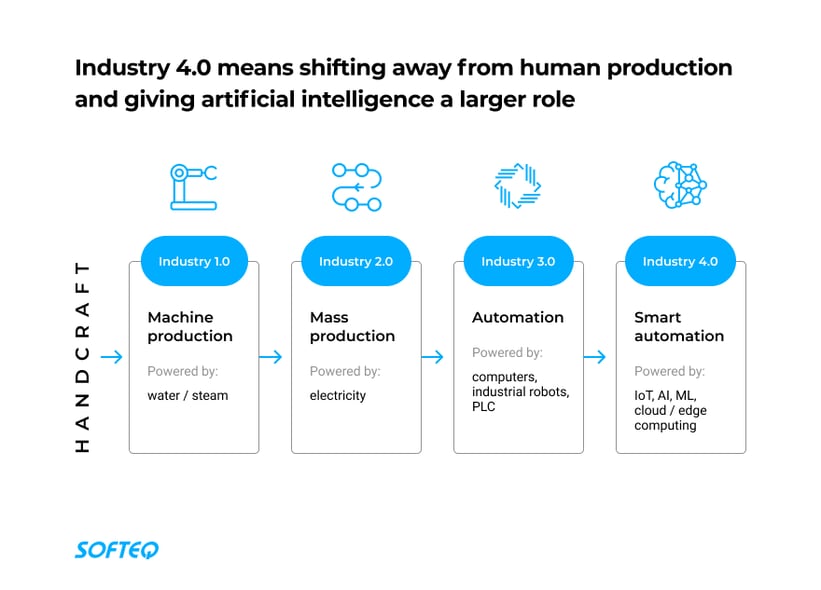
The innovation in Industry 4.0 is using IoT data for production. In other words, machines are equipped with sensors that generate data and send it to the cloud. There, artificial intelligence interprets the data, recognizes and predicts anomalies, and notifies people at the right moment. The most advanced solutions can even optimize manufacturing processes without human involvement.
But efficiency usually requires large investments. That's why few companies dare to implement Industry 4.0 in their plants. But such modernization is not only about expenses, it’s also about new sources of revenue.
Industry 4.0 Business Models: New Business Opportunities
Data technologies bring new industry 4.0 business models. These models offer data-driven value creation, new players in the value chain, new ways of cooperation between companies, and new ways of generating revenue. Let's take a closer look at three new models and their real-life implementations.
Scenario 1: Providing Additional Services with New Players in Value Chain
When you equip your products with sensors, it becomes possible to track how your products are used. Data produced by these sensors can provide your customers with insights and the potential for additional data-driven services. These services may include tracking product status, notifying the operator if something goes wrong, extending product life through timely maintenance, and optimizing production processes. All that is required is introducing IIoT platforms in your value chain.
How It Works
- The product manufacturer adds sensors to their product, connecting it to an IIoT platform. Thus, the IIoT platform gets all the data about how the product is used. After analysis, the manufacturer provides data-driven services to its customers.
- The IIoT platform provider runs an IIoT platform with AI capabilities where sensor data is stored, processed, and analyzed. They charge the manufacturer a fee for using the platform. The price depends on the number of sensors connected and the data volume.
- The customer pays the manufacturer a fee based on the actual use of the service.
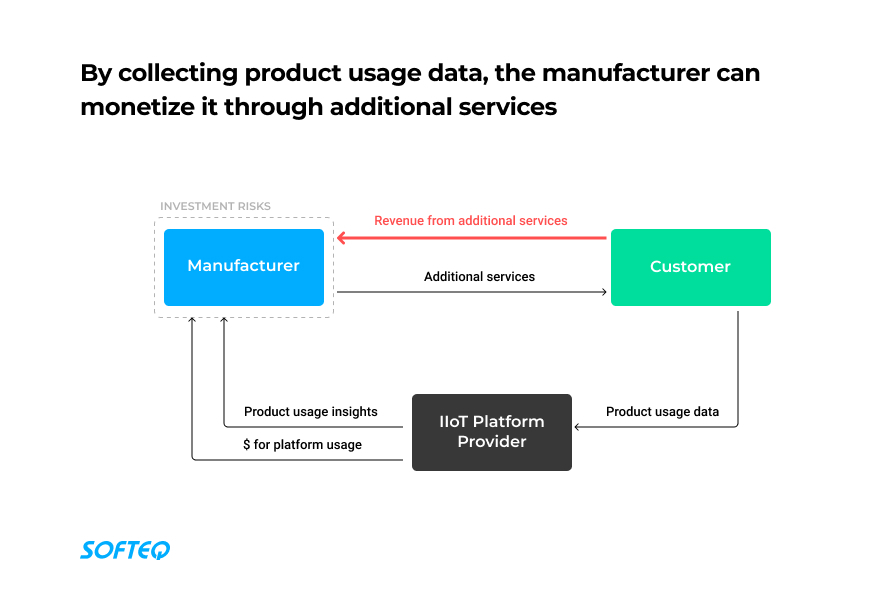
Real-life Example
HELLER is a global manufacturer of machine tools and systems for metal-cutting processes. The company has developed a solution that enables their customers to avoid losses caused by unplanned downtime. The solution uses MindSphere, an IIoT platform from Siemens that aggregates and processes machine data. All operation and maintenance data is visible in a mobile app to both the manufacturer and the customer. If maintenance is necessary or an unexpected machine overload occurs, HELLER can react immediately to improve the situation.
Value for Customers
Your customers will enjoy the extended life of equipment and the avoided downtime. They’ll no longer need to look for a provider of these services and will be able to fully focus on their core business.
Benefits for Manufacturers
Besides an additional revenue source, you also get access to the real-time data on how customers use your products. Based on this direct feedback, you can improve product features and operation.
Scenario 2: Product-as-a-Service and No Financial Risks for the Manufacturer
The next model not only provides additional data-driven services, but also involves a finance company. It buys the product connected to an IIoT platform from the manufacturer and provides the customer access to it. The customer does not buy the equipment, but pays for using it. Thus, the finance company owns the product and bears the resulting investment risk.
How It Works
- The manufacturer sells a product, generating one-off revenue to a finance company.
- The finance company buys the product and provides it to a customer for a fee.
- The IoT platform provider controls the use and pricing according to the contract. They provide the data on the product usage to the manufacturer and the finance company.
- The manufacturer ensures that a customer can use the product at all times. They charge the finance company for integration and maintenance services.
- The customer pays a fee to a finance company based on the product usage. The usage is controllable through sensors connected to the IIoT platform.
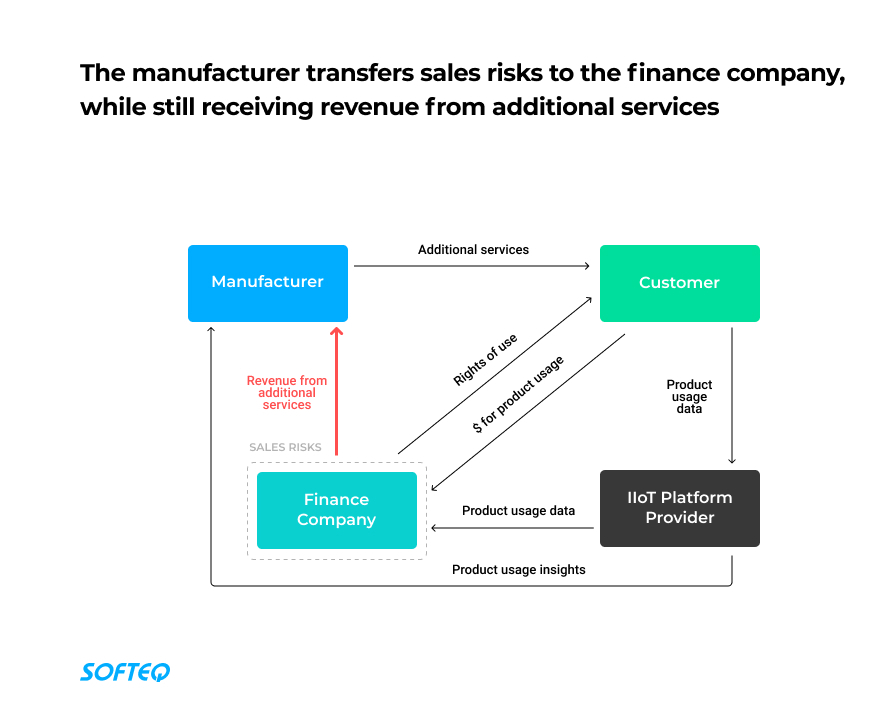
Real-Life Example
The machine manufacturer TRUMPF Group and the finance company Munich Re Group are cooperating to provide innovative services with laser cutting machines. They developed a pay-per-part model that enables manufacturing companies to use a full-service laser machine without having to buy or lease any equipment. Instead, customers pay an agreed price for each cut sheet metal part–only for what they need.
In this model, Munich Re finances the machine and bears the resulting investment risk. Relayr, a subsidiary of Munich Re, provides an IoT data analysis platform. TRUMPF supplies customers with the required machines, software, and services for manufacturing sheet metal parts.
Value for Customers
- Easy start. Customers pay for the product based on the actual usage and don’t need huge initial investments to use the product.
- No unexpected costs. Customers avoid unexpected expenses, such as charges for repairs and maintenance.
- No minimum usage requirement and scalability. When the customer doesn't need the product, they have no need to pay for it. When customers need to scale their businesses, they can easily scale the usage of the asset as well.
Benefits for Manufacturers
With this model, manufacturers can increase revenue by five times. Also they can improve relationships with their buyers, better satisfy their customers, and increase loyalty—all based on the collected data.
Scenario 3: Selling Data
Besides using the data by manufacturers themselves, there is another, more direct method to monetize data and return investments on modernization. You can sell your manufacturing data on a data marketplace—a platform for trading different types of data.
How It Works
- The data marketplace provides an infrastructure where companies buy and sell anonymized data. These companies assess the quality of the data, take care of data security, and ensure compliance with the terms of data use.
- The manufacturer sells manufacturing data collected from IoT devices installed on their equipment.
- The data buyer buys this data to develop new solutions, improve existing products, or provide additional services. Usually, the buyer is system integrators, smart sensor suppliers, or original equipment manufacturers.
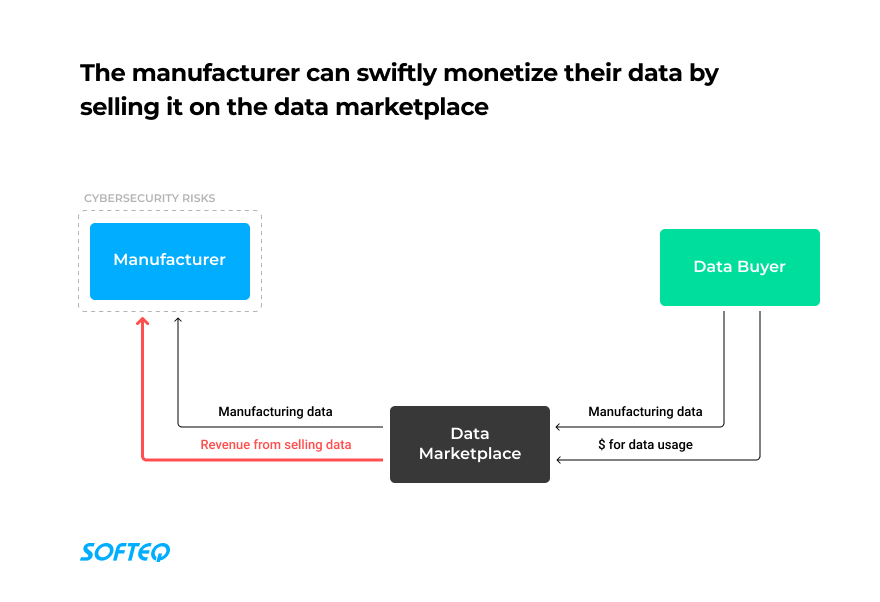
Real-Life Example
The Swiss startup Streamr created a platform that helps manufacturers monetize their real-time data. The marketplace uses blockchain technology, so manufacturers can track how their data is used. Buyers use Streamr’s cryptocurrency to pay for data usage.
Value for Customers
Data buyers get access to data sources that help them optimize the performance of their own devices, train AI systems, optimize production, provide new services, and/or perform R&D in a cost-efficient manner.
Benefits for Manufacturers
Selling sensor data is an additional—and fast—way to monetize data. Besides paying for your data, some marketplaces may offer other compensation options. These might include access to more extensive databases with pre-analysed data or data exchange with other companies.
Bottom Line
Data-driven manufacturing requires a high investment. But at the same time, it also opens up new revenue sources. By using sensor data smartly, companies can provide value-added services, improve their products with real-time feedback, sell their data, or find other ways for profitable collaboration that returns investments and reduces financial risks.
If you plan to take advantage of these new industrial IoT business models and need help with technical implementation, Softeq professionals are ready to help. We will enhance your machinery with sensors, create a cloud-based platform for data analytics or improve the performance of your equipment by enabling a smooth data transmission.
More articles on the topic
